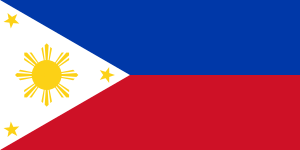I am a Filipino
I am a Filipino is an essay underlining the Filipinos' burning need for freedom.
It is Carlos P. Romulo' s most popular literary work and was published in the Philippines Herald in August of 1941.
I am a Filipino is a brilliantly written piece of literary work reflecting the love and affection of the writer to his nation. He also notes that the Philippines must wake up and accept its destiny to reach the West because of the power of both the east and the west. At present, all of us Filipinos inherit the glorious past paid for by the blood of many heroes, and now their sacrifices have provided the benefits of independence and democracy . But as a human being, whatever our future might be, we do not know. The future is unpredictable and, once it happens, we'll never grasp it. claim that the Philippines dates back to the Paleolithic period. Based on the archeological object s recovered, the Filipino society and culture were reasonably established prior to contact with other countries. The Philippines had early trade ties with China, Indo-China, Malaysia, India, and the Arab countries. Chinese silk, porcelain, pots, gold, ivory, and beads were exchanged for wax, bird nest, teak, rattan, pearls, precious stones, and other marine and forest products.


According to the late Carlos P. Romulo, the blood of his and other Filipinos flows with the eternal seed of heroes, referring to the consistent resistance of the Filipinos against being controlled by any foreign force despite being under some kind of domination for centuries under Spain.
That seed is immortal. It is the self-same seed that flowered in the heart of Jose Rizal that morning in Bagumbayan when a volley of shots put an end to all that was mortal of him and made his spirit deathless forever, the same that flowered in the hearts of Bonifacio in Balintawak, of Gregorio del Pilar at Tirad Pass, of Antonio Luna at Calumpit that bloomed in flowers of frustration in the sad heart of Emilio Aguinaldo at Palanan, and yet burst fourth royally again in the proud heart of Manuel L. Quezon when he stood at last on the threshold of ancient Malacañang Palace, in the symbolic act of possession and racial vindication.
I am Filipino is a literary work by Carlos P. Romulo and focuses on Filipinos' great desire to have their own rights. But there are courageous compatriots fighting for the flag and never giving up the independence that the Filipinos deserve. The whole point of the essay is to be proud of being a Filipino and of loving the country.
Seeing each Filipino ready to support each other is encouraging and enough to feel proud to be a Filipino. Beyond endurance, adaptability and having courage to face very tough times, us Filipinos have shown that we are also most caring, selflessly willing and always ready to support anyone in need.
References[edit]
http://malacanang.gov.ph/75480-i-am-a-filipino-by-carlos-p-romulo/
https://findanyanswer.com/what-is-the-purpose-of-i-am-a-filipino
https://www.britannica.com/biography/Carlos-P-Romulo
https://chicagopcg.dfa.gov.ph/the-philippines-history
https://www.loc.gov/item/sn94049968/
https://bayaniuniverse.fandom.com/wiki/Antonio_Luna
https://www.wattpad.com/19719649-philippine-history-filipino-traits-and
https://www.britannica.com/event/Paleolithic-Period
https://filipiknow.net/archaeological-discoveries-in-the-philippines/
External link[edit]
This article "I am a Filipino" is from Wikipedia. The list of its authors can be seen in its historical and/or the page Edithistory:I am a Filipino. Articles copied from Draft Namespace on Wikipedia could be seen on the Draft Namespace of Wikipedia and not main one.
